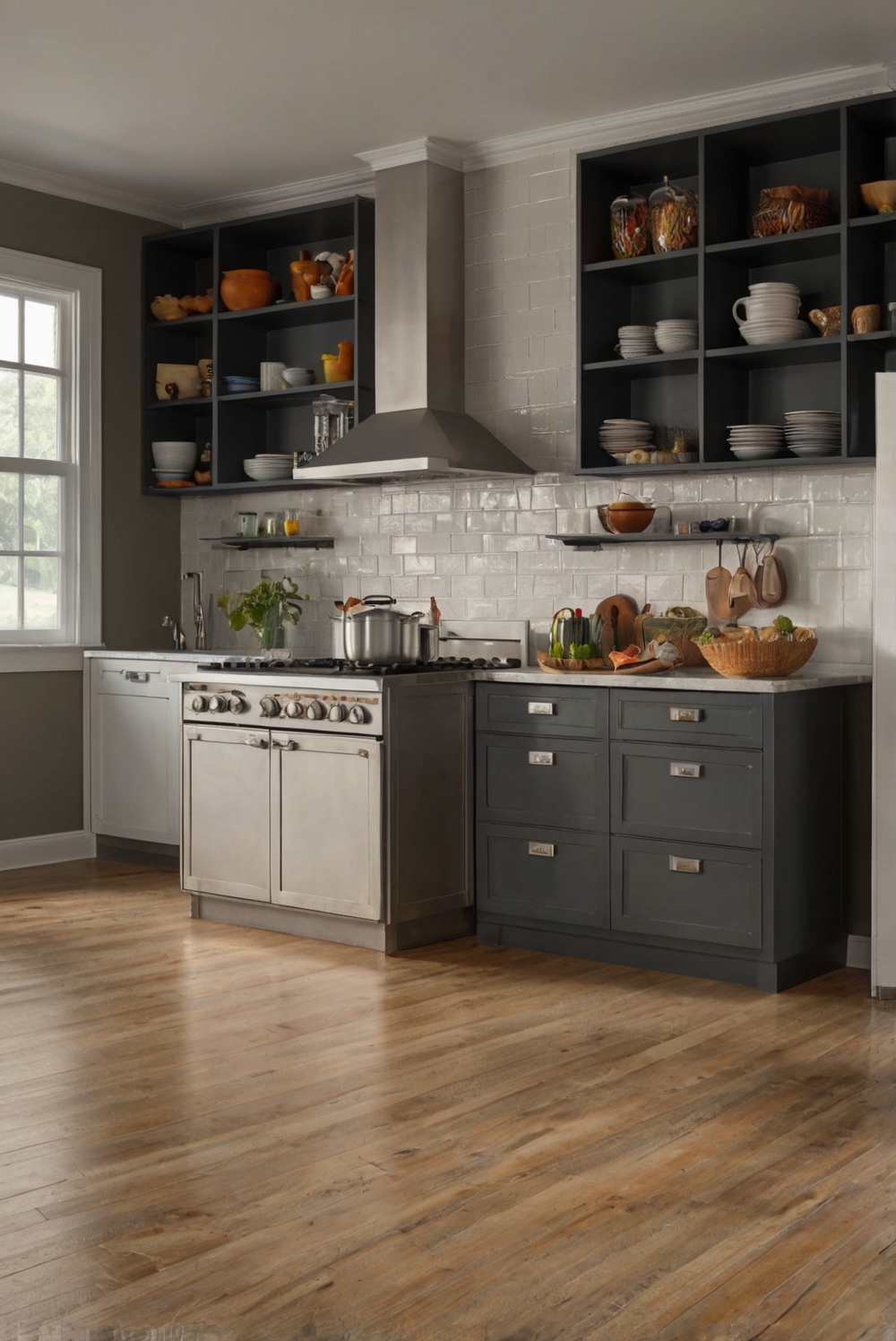Curious about how flooring material and color can enhance your kitchen design? Explore daily interior designer routines and décor tips in this insightful post.
Which flooring material and color complement your kitchen design?
Rely on natural materials like hardwood or ceramic tiles for a timeless look that complements various kitchen styles.
Opt for light or medium wood tones for a warm and inviting ambiance, or go for neutral-colored tiles for a clean and contemporary feel.
Consider the maintenance requirements of the flooring material to ensure longevity and ease of cleaning.
For a cohesive look, coordinate the flooring color with the kitchen cabinetry or countertops.
Engage in proper space planning to ensure the flooring material fits seamlessly with your overall interior design scheme.
Which flooring material and color complement your kitchen design?
Choosing the right flooring material and color for your kitchen is crucial to creating a cohesive and visually appealing design. The flooring you select can significantly impact the overall look and feel of your kitchen. Here are some important factors to consider when choosing the flooring for your kitchen design:
Material:
When it comes to selecting the material for your kitchen flooring, it’s essential to consider factors such as durability, maintenance, and style. Popular options for kitchen flooring materials include hardwood, tile, laminate, vinyl, and stone. Hardwood flooring adds warmth and elegance to the kitchen but may require more maintenance. Tile is durable and easy to clean, making it a practical choice for the kitchen. Laminate and vinyl flooring offer budget-friendly options that mimic the look of hardwood or tile. Stone flooring, such as marble or travertine, adds a luxurious touch to the kitchen but may require sealing to prevent stains.
Color:
The color of your kitchen flooring can have a significant impact on the overall aesthetic of the space. Light-colored flooring, such as white or light wood, can make a small kitchen feel more spacious and airy. Dark-colored flooring, such as espresso or charcoal, can create a dramatic and sophisticated look but may show dirt and scratches more easily. Neutral colors like beige or gray are versatile options that can complement a variety of kitchen styles and color schemes. Consider the existing color palette of your kitchen, including the cabinets, countertops, and walls, when selecting the color of your flooring.
Design:
The design of your kitchen flooring can also play a role in enhancing the overall look of the space. Consider patterns, textures, and layouts that can add visual interest to your kitchen design. For example, a herringbone pattern in hardwood flooring can create a timeless and elegant look, while a mosaic tile pattern can add a pop of color and personality to the kitchen. Mixing different materials, such as combining hardwood with tile or stone accents, can create a unique and custom look for your kitchen flooring.
Conclusion:
Choosing the right flooring material and color for your kitchen design is a decision that should be made carefully. Consider factors such as durability, maintenance, style, color, and design when selecting the flooring for your kitchen. Take into account the overall aesthetic of your kitchen and how the flooring will complement the existing elements in the space. By choosing the right flooring material and color, you can create a cohesive and visually appealing kitchen design that reflects your personal style and enhances the functionality of the space.

